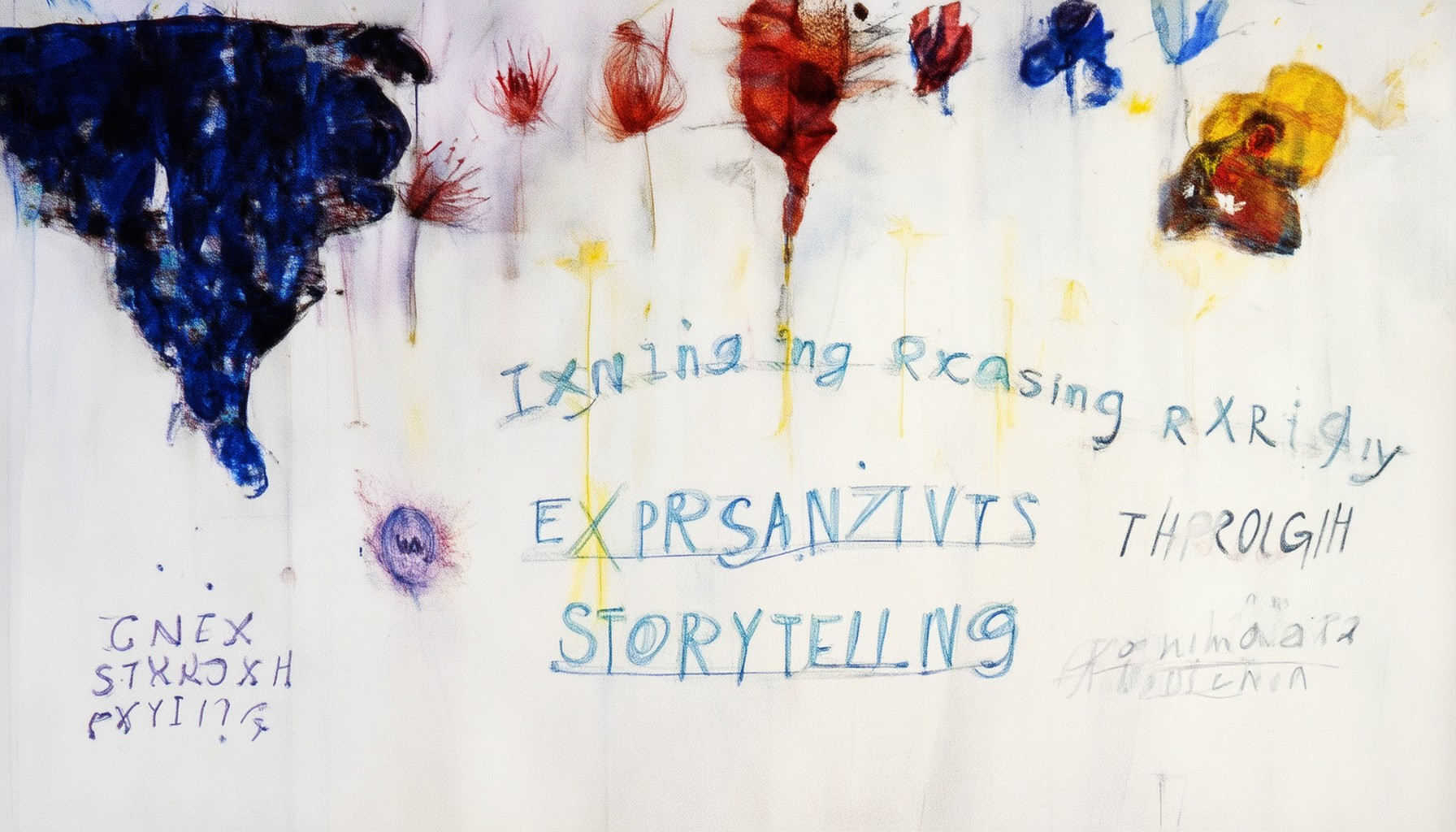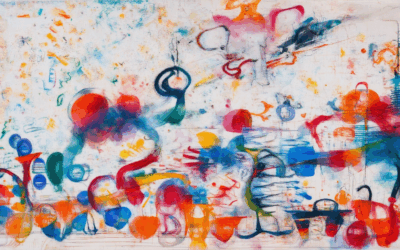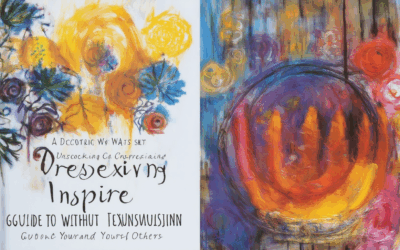Storytelling is a universal human experience, a way to share thoughts, emotions, and experiences that transcends language. While traditionally associated with literature, storytelling is a powerful medium that extends its influence into the realm of visual art. In this article, we delve into the profound connection between art and storytelling, exploring how artists use their craft to express narratives that resonate deeply with audiences. From the brushstrokes that evoke emotions to the symbolic imagery that conveys complex ideas, art becomes a dynamic form of storytelling, allowing viewers to connect with the artist’s vision on a profound level. By examining the techniques, themes, and innovations in visual storytelling, this article will uncover how art serves as a bridge between creator and observer, fostering empathy, inspiration, and a deeper understanding of the world around us. Whether you’re an aspiring artist or simply someone who appreciates creative expression, this exploration of storytelling through art promises to illuminate new ways of seeing and sharing the beauty of the world.

How Is Art a Form of Storytelling?
Art is inherently a powerful medium for storytelling, allowing creators to communicate ideas, emotions, and experiences through visual means. Unlike traditional forms of storytelling such as literature or film, art can convey narratives in ways that are deeply personal and universally accessible. Here’s how art serves as a form of storytelling:
Visual Narratives
One of the most straightforward ways art tells stories is through its ability to depict scenes, characters, and sequences. Painters, sculptors, and photographers often arrange elements in a specific order to guide viewers through a narrative. For example, a series of paintings might illustrate the progression of a story, from the beginning to the climax and resolution.
Symbolic Storytelling
Art doesn’t always tell stories literally. Instead, it can use symbols, metaphors, and abstract concepts to convey deeper meanings. A sculpture might symbolize hope, while a piece of installation art could explore themes of identity or memory. These works invite interpretation, allowing viewers to piece together their own narrative from the artwork.
The Emotional Connection
Storytelling thrives on emotion, and art excels at evoking feelings. Through colors, textures, and compositions, artists can evoke nostalgia, fear, joy, or anger. This emotional resonance helps audiences connect with the artwork on a personal level, making the story feel immediate and relatable.
Cultural Preservation
Many cultures use art to preserve their history, traditions, and beliefs. From cave drawings to religious murals, art serves as a record of cultural heritage. This form of storytelling ensures that traditions are passed down through generations, helping to maintain cultural identity.
Expression of Identity
Art can also be a form of self-expression, allowing individuals to share their unique perspectives and life experiences. This personal storytelling can take many forms, from street art that reflects social issues to portraits that capture individuality. By creating art, people often reveal parts of themselves, offering a glimpse into their lives and thoughts.
Engagement and Interpretation
Great art often leaves room for interpretation, encouraging viewers to engage with the work on their own terms. This interactive aspect allows for diverse storytelling experiences, as each person may interpret the same piece differently. This flexibility makes art a dynamic and inclusive medium for sharing stories.
By combining visual elements with emotional depth and cultural significance, art creates a unique form of storytelling that transcends words. It invites viewers to explore worlds, reflect on experiences, and connect with the creator’s vision.
What is it called when an artwork tells a story?
Narrative art is the term used to describe artwork that tells a story. This form of art conveys a sequence of events or emotions through visual imagery, often evoking a sense of connection and engagement with the viewer.
Purpose of Narrative Art
- Tells a story or conveys a narrative
- Evoke emotions and universal truths
- Communicate cultural or personal aspirations
- Ignite imagination and inspire reflection
Forms of Narrative Art
- Paintings
- Sculptures
- Digital media
- Storyboards
- Comic book art
Impact of Narrative Art
Narrative art transcends traditional boundaries, blending history, culture, and personal experiences. It allows artists to communicate complex ideas through visual storytelling, making it a powerful tool for education and inspiration.

How Do You Learn Storytelling Art?
Learning storytelling art involves a combination of understanding the craft, practicing consistently, and refining your skills over time. Here’s a step-by-step guide to mastering storytelling:
Understanding Storytelling
Storytelling is a universal human skill that relies on emotion, empathy, and connection. To excel in storytelling, you need to:
- Identify Your Audience: Tailor your stories to resonate with your listeners or readers.
- Choose a Strong Theme: Every great story revolves around a central theme or message.
- Develop Character Depth: Create relatable and multi-dimensional characters.
- Build a Plot Structure: A clear beginning, middle, and end will keep your audience engaged.
Practical Steps to Improve Your Storytelling
Improving your storytelling requires practice and feedback. Here’s how to get started:
- Read Great Stories: Study works from various genres to understand different storytelling styles.
- Practice Regularly: Write or tell stories daily to develop your muscle memory and creativity.
- Seek Feedback: Share your stories with others to get constructive criticism and improve.
- Study Successful Stories: Analyze successful stories to identify common techniques and patterns.
Additional Tips for Mastering Storytelling
Advanced tips to take your storytelling to the next level:
- Engage Your Audience: Use eye contact, tone, and body language to connect with your audience.
- Use Visual Aids: Pictures, props, or slides can enhance your storytelling experience.
- Stay Curious: Always ask questions and seek to understand different perspectives.
- Prioritize Clarity: Keep your stories simple and focused to maintain your audience’s interest.
Resources to Help You Learn Storytelling
To further your storytelling journey, explore these valuable resources:
- Patrick Mettraux Blog : Packed with insights and tips on storytelling and creativity.
- Writer’s Digest : Offers courses, workshops, and articles on storytelling techniques.
- StoryCraft : Provides tools and exercises to improve your storytelling abilities.
By following these steps and leveraging the right resources, you’ll develop a strong foundation in storytelling art and unlock your creative potential.

What is Storytelling in Creative Arts?
Storytelling is a powerful medium of self-expression, cultural preservation, and audience engagement. It involves crafting and sharing narratives, often with emotional depth, to convey ideas, inspire, or entertain. In creative arts, storytelling serves as a fundamental tool for artists, writers, and performers to communicate their vision and connect with audiences.
Types of Storytelling in Creative Arts
- Oral Tradition : Passed down through generations, oral storytelling relies on verbal communication and non-verbal cues like tone and gestures. This form emphasizes improvisation and audience interaction, making it highly dynamic.
- Written Narratives : Expressed through novels, poetry, scripts, or essays, written storytelling allows for greater detail and complexity. It enables authors to explore themes deeply and invite readers to interpret texts in various ways.
- Visual Storytelling : Through art, photography, or film, visual storytelling conveys emotions and ideas without words. It relies heavily on imagery and symbolism to communicate messages effectively.
- Performative Storytelling : Seen in theater, dance, or live performances, this type combines storytelling with movement, music, or dialogue to create immersive experiences for the audience.
Applications in Creative Arts
Storytelling finds applications across various creative disciplines:
- Art and Design : Artists use storytelling to convey themes and evoke emotions. For example, a painting might tell a story of human connection or nature’s power.
- Film and Media : Directors employ storytelling techniques to develop plots, characters, and conflicts, engaging viewers emotionally and intellectually.
- Marketing and Advertising : Brands leverage storytelling to create memorable campaigns that resonate with consumers, fostering a deeper connection between products and people.
- Education : Teachers use storytelling to make complex concepts accessible and engaging, helping students grasp difficult ideas more easily.
The Role of Storytelling in Patrick Mettraux
On Patrick Mettraux , storytelling is central to inspiring readers through personal narratives and artistic reflections. The blog explores creativity, offering tips and insights to nurture imagination and spark innovation. By sharing authentic stories, Patrick Mettraux fosters a community of inspired individuals who value creative expression.
Conclusion
Storytelling is a versatile and transformative tool in creative arts, capable of transcending boundaries and resonating deeply with audiences. Whether through words, images, or performance, its power lies in its ability to inspire, educate, and connect.
What Are the 4 Types of Storytelling?
Here are the four primary types of storytelling, each serving distinct purposes and employing different techniques to engage audiences:
- 1. Character-Driven Storytelling
- Focuses on developing intricate characters and their personal journeys.
- Example: Novels like “To Kill a Mockingbird” or TV series like “Breaking Bad.”
-
2. Plot-Driven Storytelling
- Centers on a sequence of events leading to a climax and resolution.
- Example: Action movies or thrillers such as “Mission Impossible.”
-
3. Theme-Driven Storytelling
- Conveys a central message or moral lesson through the narrative.
- Example: Fables or parables that highlight universal truths.
-
4. World-Building Storytelling
- Creates a detailed setting that becomes integral to the story.
- Example: Fantasy epics like “Lord of the Rings” or role-playing games with rich lore.
Each type offers unique storytelling experiences, catering to different audience preferences and storytelling objectives.

How Does Storytelling Promote Creativity?
Storytelling is a powerful medium that fosters creativity by engaging audiences in a meaningful way. It allows individuals to explore diverse perspectives, spark imagination, and develop innovative thinking.
Expanding Imagination
Storytelling encourages the creation of new ideas and concepts by introducing listeners to different worlds, characters, and scenarios. This exposure broadens cognitive horizons, enabling individuals to approach problems from fresh angles and think outside conventional boundaries.
Fostering Emotional Connection
Through storytelling, people develop a deeper understanding of others’ emotions and experiences. This emotional resonance helps in cultivating empathy and compassion, which are crucial traits for creative expression and problem-solving.
Developing Problem-Solving Skills
Stories often present challenges and dilemmas that require critical thinking to resolve. Engaging with these narratives enhances analytical and decision-making abilities, which are essential for creativity and innovation.
Promoting Collaboration and Communication
Storytelling facilitates teamwork and shared understanding. Whether in group settings or individual activities, constructing and sharing stories improves communication skills and encourages collaborative creativity.
Cultural Preservation and Inspiration
Stories carry cultural values, traditions, and histories. By learning and retelling these tales, individuals gain inspiration and insight into diverse ways of life, enriching their creative expressions and fostering a broader appreciation for human experiences.
In addition to its personal benefits, storytelling also serves as a professional tool. Platforms like Patrick Mettraux highlight the role of narrative in business and creative fields, emphasizing its ability to inspire and influence.
Ultimately, storytelling is a dynamic process that nurtures creativity by providing a safe space for exploration, experimentation, and growth. It is a tool that everyone can use to unlock their potential and contribute meaningfully to their surroundings.





0 Comments